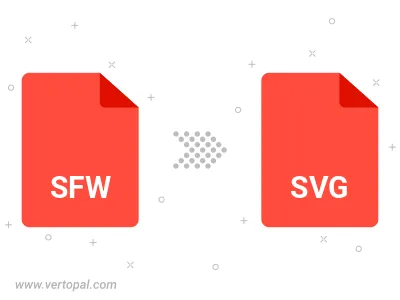Convert SFW to SVG
Convert SFW images to SVG format, edit and optimize images online and free.

The SFW file extension stands for Seattle FilmWorks Image, a proprietary bitmap image format created by Seattle FilmWorks, a company specializing in film processing and digital imaging. Although the company is now defunct, SFW files can still be viewed using specific software or converted to standard formats like JPEG. This format is not widely supported by modern image editing software.
SVG stands for Scalable Vector Graphics, a versatile file format developed by the World Wide Web Consortium (W3C) in 1999. This XML-based format is primarily used for defining vector-based graphics for the web, enabling smooth scaling and high-quality rendering on various display resolutions. SVG's scalability, interactivity, and animation support make it ideal for responsive web design, complex illustrations, diagrams, and data visualizations. Its textual nature ensures easy editing and integration with other web technologies like HTML, CSS, and JavaScript, promoting seamless user experiences and streamlined workflows in modern web development.
Choose your SFW image for uploading to our SFW converter.
Check the file preview quickly and use SFW to SVG tools if you need to change the conversion settings.
Once the convert is complete, you can download the final SVG file.

To change SFW format to SVG, upload your SFW file to proceed to the preview page. Use any available tools if you want to edit and manipulate your SFW file. Click on the convert button and wait for the convert to complete. Download the converted SVG file afterward.
Follow steps below if you have installed Vertopal CLI on your macOS system.
cd to SFW file location or include path to your input file.Follow steps below if you have installed Vertopal CLI on your Windows system.
cd to SFW file location or include path to your input file.Follow steps below if you have installed Vertopal CLI on your Linux system.
cd to SFW file location or include path to your input file.